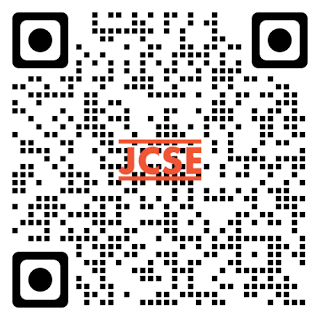Enhancing Credit Card Fraud Detection with Modified Binary Bat Algorithm: A Comparative Study with SVM, RF, and DT
(1) Federal University Wukari
(2) Modibbo Adama University
(3) Federal University Wukari
Abstract
Keywords
Full Text:
PDFReferences
V. N. Dornadula and S. Geetha, “Credit Card Fraud Detection using Machine Learning Algorithms,” Procedia Computer Science, vol. 165. Elsevier BV, pp. 631–641, 2019. doi: 10.1016/j.procs.2020.01.057.
R. J. Bolton and D. J. Hand, “Statistical Fraud Detection: A Review,” Statistical Science, vol. 17, no. 3. Institute of Mathematical Statistics, Aug. 01, 2002. doi: 10.1214/ss/1042727940.
B. Andhavarapu, S. V. K. Ratna, P. Jyothi, S. G. Varun, and S. R.Rohith .(2020, February). "Credit card fraud detection using Machine learning algorithms". Quest Journals. vol. 8, issue 2, pp. 4-11.
Y. Sahin, and E. Duman, "Detecting Credit Card Fraud by Decision Trees and Support Vector Machines", Proceedings of International Multi-Conference of Engineers and Computer Scientists (IMECS 2011), vol. 1, pp. 1-6, Mar. 16-18 2011, ISSN 2078-0966, ISBN 978-988-18210-3-4.
S. P. Maniraj, S. Aditya , D. S. Swarna, and A. Shadab. (2019, September). "Credit Card Fraud Detection using Machine Learning and Data Science". vol. 8, issue 9, pp. 1-5. doi: 10.17577/IJERTV8IS090031.
M. A. Hambali, T. O. Oladele, K. S. Adewole, A. K. Sangaiah, and W. Gao, “Feature selection and computational optimization in high-dimensional microarray cancer datasets via InfoGain-modified bat algorithm,” Multimedia Tools and Applications, vol. 81, no. 25. Springer Science and Business Media LLC, pp. 36505–36549, Aug. 11, 2022. doi: 10.1007/s11042-022-13532-5.
Z. Li, M. Huang, G. Liu, and C. Jiang, “A hybrid method with dynamic weighted entropy for handling the problem of class imbalance with overlap in credit card fraud detection,” Expert Systems with Applications, vol. 175. Elsevier BV, p. 114750, Aug. 2021. doi: 10.1016/j.eswa.2021.114750.
J. Forough and S. Momtazi, “Ensemble of deep sequential models for credit card fraud detection,” Applied Soft Computing, vol. 99. Elsevier BV, p. 106883, Feb. 2021. doi: 10.1016/j.asoc.2020.106883.
SamanehSorournejad, Z. Zojaji, R. E. Atani, and A. H. Monadjemi, “A Survey of Credit Card Fraud Detection Techniques: Data and Technique Oriented Perspective.” arXiv, 2016. doi: 10.48550/ARXIV.1611.06439.
A. Harshita, G.Richa, and C. Raman. "Credit Card Fraud Detection Using Machine Learning". EasyChair Preprint, pp.1-8. 2021.
M. S. Tahsin, N. Firoz, S. A. H. Chowdhury, S. M. A. Wasei, M. A. Karim and M. Y. Ara, "Investigation of Credit Card Fraud detection under the lens of Comparative Machine Learning models," 2022 International Conference on Innovation and Intelligence for Informatics, Computing, and Technologies (3ICT), Sakheer, Bahrain, 2022, pp. 25-31, doi: 10.1109/3ICT56508.2022.9990897.
S.Nikfar , and B. Touraj. (2018). Detection of the Suspicious Transactions by Integrating the Neural Network and Bat Algorithm. Specialty Journal of Electronic and Computer Sciences, vol. 4, issue1, pp. 9-19.
Y. K. Saheed, M. A. Hambali, M. O. Arowolo and Y. A. Olasupo, "Application of GA Feature Selection on Naive Bayes, Random Forest and SVM for Credit Card Fraud Detection," 2020 International Conference on Decision Aid Sciences and Application (DASA), Sakheer, Bahrain, 2020, pp. 1091-1097, doi: 10.1109/DASA51403.2020.9317228.
Doreswamy and U. S. M, “A Binary Bat Inspired Algorithm for the Classification of Breast Cancer Data,” International Journal on Soft Computing, Artificial Intelligence and Applications, vol. 5, no. 2/3. Academy and Industry Research Collaboration Center (AIRCC), pp. 01–21, Aug. 30, 2016. doi: 10.5121/ijscai.2016.5301.
A. A. Taha and S. J. Malebary, "An Intelligent Approach to Credit Card Fraud Detection Using an Optimized Light Gradient Boosting Machine," in IEEE Access, vol. 8, pp. 25579-25587, 2020, doi: 10.1109/ACCESS.2020.2971354.
D. Cheng, S. Xiang, C. Shang, Y. Zhang, F. Yang, and L. Zhang, “Spatio-Temporal Attention-Based Neural Network for Credit Card Fraud Detection,” Proceedings of the AAAI Conference on Artificial Intelligence, vol. 34, no. 01. Association for the Advancement of Artificial Intelligence (AAAI), pp. 362–369, Apr. 03, 2020. doi: 10.1609/aaai.v34i01.5371.
F. Carcillo, Y.-A. Le Borgne, O. Caelen, Y. Kessaci, F. Oblé, and G. Bontempi, “Combining unsupervised and supervised learning in credit card fraud detection,” Information Sciences, vol. 557. Elsevier BV, pp. 317–331, May 2021. doi: 10.1016/j.ins.2019.05.042.
R. Y. M. Nakamura, L. A. M. Pereira, K. A. Costa, D. Rodrigues, J. P. Papa and X. . -S. Yang, "BBA: A Binary Bat Algorithm for Feature Selection," 2012 25th SIBGRAPI Conference on Graphics, Patterns and Images, Ouro Preto, Brazil, 2012, pp. 291-297, doi: 10.1109/SIBGRAPI.2012.47.
Refbacks
- There are currently no refbacks.
Indexs by:

 Journal of Computer Science and Engineering (JCSE)
Journal of Computer Science and Engineering (JCSE)Published by : ICSE (Institute of Computer Sciences and Engineering)
Website : http://icsejournal.com/index.php/JCSE/
Email: jcse@icsejournal.com
 is licensed under a Creative Commons Attribution-ShareAlike 4.0 International License.
is licensed under a Creative Commons Attribution-ShareAlike 4.0 International License.







